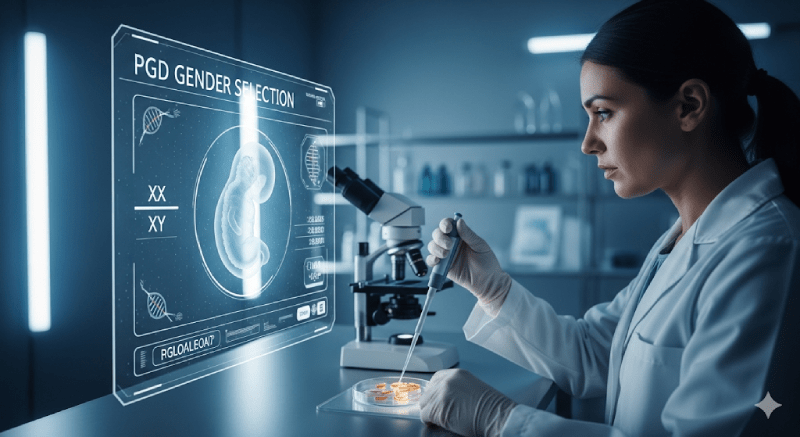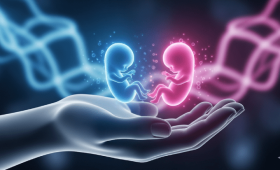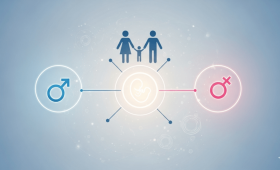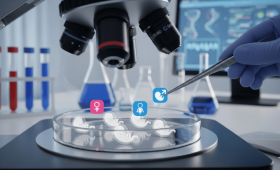Navigating Gender Selection IVF in Cyprus
The decision to pursue gender selection through In Vitro Fertilization (IVF) is a complex and deeply personal one, requiring a thorough understanding of medical, legal, and financial factors. This report serves as a definitive guide for prospective parents considering Cyprus as their destination. The primary method for gender selection is Preimplantation Genetic Diagnosis (PGD), a technology offering near-perfect accuracy in sex determination. However, the legal and financial landscape is not uniform across the island. The report clarifies the critical distinction between the Republic of Cyprus (Southern Cyprus) and the Turkish Republic of Northern Cyprus, a key variable in the legality of non-medical gender selection. While clinics advertise base prices, a comprehensive financial analysis reveals that the total cost of a cycle is significantly higher due to additional, often-unlisted expenses. Finally, a crucial distinction is made between the scientifically confirmed accuracy of gender identification and the variable, age-dependent success rate of achieving a live birth. This report aims to equip individuals with the knowledge to make an informed decision, manage expectations, and navigate this process with due diligence.
The Legal and Ethical Framework: A Bipartite Island
For couples exploring gender selection, the legal landscape in Cyprus can appear contradictory. Some sources indicate the practice is legally permitted for non-medical reasons, such as family balancing , while others suggest it is strictly regulated and reserved for medical necessity. This apparent conflict is not a factual inconsistency but rather a direct result of the island’s unique geopolitical situation.
The key to understanding this disparity lies in the distinction between the two jurisdictions of the island: the Republic of Cyprus (an EU member state, located in the south) and the Turkish Republic of Northern Cyprus (an unrecognized state, located in the north). The Republic of Cyprus adheres to stricter laws, primarily allowing sex selection only to prevent the transmission of serious sex-linked genetic diseases. Conversely, Northern Cyprus has more permissive regulations that legally permit gender selection for non-medical purposes, including family balancing, making it a prominent destination for international patients seeking this option. The marketing materials of clinics that offer non-medical gender selection are, therefore, almost always referring to facilities in the northern part of the island.
The permissible reasons for undergoing gender selection are diverse, ranging from clear medical necessity to personal preference. The most globally accepted reason is to prevent sex-linked genetic disorders, such as hemophilia or Duchenne muscular dystrophy, which are passed from a parent to a child of a specific sex. This is a primary, medically-driven application of the technology. However, in Northern Cyprus, the more common and elective reason is for “family balancing”—a desire for a child of a specific gender to “complete” a family that already has children of the opposite sex. Sources also note that the decision can be influenced by cultural traditions or serve as a means of emotional healing after the loss of a child of a specific sex.
The availability of gender selection technology has spurred a broader ethical debate, which clinics and patients must navigate. A central point of contention is the potential for embryo destruction. The PGD process identifies the gender of all created embryos, and in a case of family balancing, healthy embryos of the “wrong” gender may be discarded, frozen, or donated. Some clinics, such as North Cyprus IVF Center, do not use PGT for non-medical gender selection for this specific ethical reason, opting instead for a less accurate sperm-sorting method. Another concern is the “slippery slope” argument, which posits that choosing gender could lead to a societal push for selecting other traits, paving the way for so-called “designer babies”.
While critics fear that widespread gender selection could skew population gender ratios, data suggests this may not be a significant risk given the small percentage of births that result from IVF. Furthermore, a more complex demographic effect is posited by some researchers. By removing the uncertainty of a child’s gender, this technology could actually increase a country’s total fertility rate. In this view, a couple that might otherwise stop at one child due to gender preference uncertainty might feel encouraged to have a second, or even a third, to achieve their desired family composition. This counterintuitive effect illustrates the intricate societal consequences that extend far beyond the ethical debates.
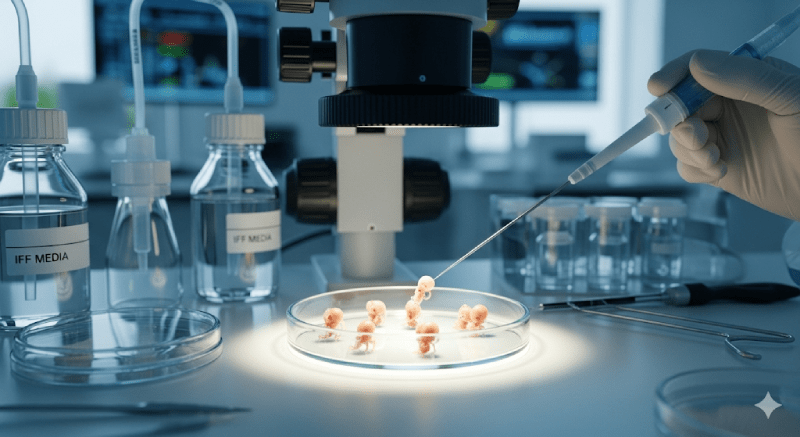
Medical Technologies and the IVF-PGD Protocol
Gender selection is not a standalone procedure but an advanced component of an IVF cycle. The process relies on sophisticated genetic technologies to accurately identify the sex of an embryo before it is transferred to the uterus.
The Technologies Demystified: PGD, NGS, and MicroSort
There are three primary methods employed for gender selection, each with distinct characteristics regarding accuracy and application.
- Preimplantation Genetic Diagnosis (PGD): This is the most common and reliable method. PGD is a genetic test performed on embryos created via IVF. A small biopsy is taken from the embryo, and the extracted cells are analyzed for specific chromosomes, including the X and Y sex chromosomes, to determine gender. It also screens for common genetic disorders and chromosomal abnormalities.
- Next-Generation Sequencing (NGS): NGS represents a more comprehensive form of PGT. It examines all 23 pairs of chromosomes, providing highly detailed information on both genetic health and gender. Due to its thoroughness, NGS is preferred by families with a history of genetic disorders. A key logistical difference is the time required for results (3-4 weeks), which necessitates freezing the embryos and scheduling the transfer in a later cycle.
- MicroSort: This less common method is a sperm-sorting technology that separates sperm into X- (female) and Y-bearing (male) cells based on their DNA density. The sorted sperm is then used for either an intrauterine insemination (IUI) or an IVF cycle. This method is considered non-invasive but has a significantly lower accuracy rate, ranging from 70% to 80%.
A comparative overview of these technologies is provided in the following table.
| Characteristic | PGD/NGS | MicroSort |
| Gender Accuracy | 99.9% | 70-80% |
| Genetic Screening | Comprehensive (PGD/NGS) | Limited/None (Embryos can be tested later) |
| Invasiveness | Requires embryo biopsy | Non-invasive (sperm sorting) |
| Required Procedure | IVF only | Can be used with IVF or IUI |
| Turnaround Time | PGD: Quick (Day 5 transfer) | Immediate |
| Embryo Transfer | PGD: Fresh transfer (Day 5) | Depends on subsequent procedure (IUI/IVF) |
| NGS: Frozen transfer (later cycle) |
The Comprehensive PGD/NGS Protocol: A Step-by-Step Journey
The patient journey for PGD-based gender selection is a multi-stage process that typically spans several weeks.
- Initial Consultation and Pre-screening: The process begins with a virtual or in-person consultation with a fertility specialist. The couple undergoes diagnostic tests, including blood work, hormone evaluations, and a semen analysis, to assess eligibility and determine a personalized treatment plan.
- Ovarian Stimulation and Monitoring: The female partner self-administers hormonal injections for approximately 10 to 12 days to stimulate the ovaries to produce multiple mature eggs. This stage can often be managed in the patient’s home country to reduce the required time in Cyprus.
- Egg Retrieval and Fertilization: The patient travels to Cyprus for the retrieval procedure. Eggs are collected in a minimally invasive, 10-15 minute procedure performed under a low dose of anesthesia. Simultaneously, a sperm sample is collected from the male partner. The eggs are then fertilized using the Intra-cytoplasmic Sperm Injection (ICSI) method, where a single, healthy sperm is injected into each mature egg.
- Embryo Biopsy and Genetic Analysis: The fertilized embryos are cultured for three to five days. On Day 3 or Day 5, a biopsy is performed on each developed embryo to extract a small number of cells for genetic testing. The extracted cells are sent to a genetic laboratory for PGD or NGS analysis to determine gender and genetic health.
- Embryo Selection and Transfer: Based on the results of the genetic analysis, the healthiest embryos of the desired gender are selected for transfer to the uterus. For PGD, the transfer typically occurs on Day 5, while for NGS, the transfer is scheduled for a subsequent cycle after the results are received. The embryo transfer is a painless, ultrasound-guided process that takes less than 10 minutes.
- Post-Transfer and Pregnancy Confirmation: Following the transfer, the patient is monitored for potential side effects. A blood test is performed approximately 10 to 12 days later to confirm a pregnancy.
A Comprehensive Financial Analysis: Costs and Global Comparisons
For couples considering gender selection in Cyprus, the financial aspect is a primary motivator. While clinics are often lauded for their “affordable” and “competitive” pricing, it is essential to understand the difference between the advertised base cost and the total “all-in” expenditure.
Deconstructing the Cost of PGD Gender Selection
Advertised base prices for gender selection can be misleading, as they often do not include significant expenses. For example, MicroSort IVF is advertised at €4,200 , and gender selection with PGD at some clinics is priced at approximately €7,500. Other sources provide a broader range for a full IVF with PGD/PGS cycle, from €6,100 to €15,000, depending on the number of chromosomes screened and other factors. However, these figures represent only a portion of the total financial commitment.
A closer analysis of the available data reveals that the primary hidden cost is medication. Hormonal injections and other required medications can add a substantial €2,500 to €4,000 to the total cost. In addition, patients must budget for travel, including flights and accommodation, for a stay of 10 to 18 days. Hotel costs alone can range from €70 to €200 per night. For couples who create excess healthy embryos of the desired gender, there may also be a separate cost for cryopreservation, or embryo freezing, which can be around €850.
The following table provides a more transparent, all-in cost breakdown for a PGD gender selection cycle in Cyprus.
| Itemized Cost | Estimated Price Range |
| Clinic Base Fee (IVF + PGD) | €5,000 – €12,000 |
| Medication | €2,500 – €4,000 |
| Accommodation (10-18 nights) | €700 – €3,600 |
| Flights and Local Transport | Variable, depending on origin |
| Embryo Freezing (Optional) | ~€850 |
| Estimated Total All-in Cost | €8,200 – €20,400+ |
A Global Cost Perspective
Cyprus’s status as a medical tourism hub for fertility treatments is largely due to its affordability relative to other Western nations. While gender selection is illegal in the UK and banned for non-medical reasons in much of the EU, a standard IVF cycle in the UK costs between £5,000 and £8,000. In the United States, the cost of a single IVF cycle with gender selection can range from $20,000 to $30,000 or more, not including additional fees. Other popular medical tourism destinations offer more comparable prices to Cyprus, such as Mexico ($5,000-$7,000) or Georgia ($6,000-$8,000).
Section 4: A Realistic Look at Outcomes: Beyond the 99.9%
The most frequently cited statistic in gender selection is the accuracy of the genetic test itself. Sources confirm that PGD and NGS methods are over 99.9% accurate in identifying the sex of an embryo. It is critical to recognize that this figure refers solely to the test’s ability to identify an embryo’s chromosomal makeup and not to the overall success of achieving a live birth. This is a common point of confusion that can lead to significant disappointment. The success of the entire process depends on a series of biological realities that the test cannot control.
The first variable is the number of healthy, viable embryos created in a cycle. While PGD identifies gender with near-perfect accuracy, a couple may produce a number of embryos that are all of a single sex, or none of the desired sex may be genetically viable for transfer. For example, a couple may undergo a cycle, create five embryos, and find that all are female or that all are male. In such cases, there is no embryo of the desired sex to transfer. This highlights the inherent unpredictability of human biology, a factor that is distinct from the scientific accuracy of the testing method.
The second variable is the ultimate success rate of the pregnancy. While the high accuracy of PGD/NGS can boost the chances of a successful pregnancy by ensuring only healthy embryos are transferred, the live birth rate remains dependent on factors such as maternal age, egg and sperm quality, and uterine health. The pregnancy success rates provided by clinics reflect this reality and vary significantly with age. For women under 35, success rates can be as high as 90% in some cases, but they drop considerably for women in more advanced biological ages, averaging 75% to 85% for women over 35 and falling further to 25% for women in their early 40s.
Final Recommendations and Decision-Making Checklist
Navigating the landscape of gender selection IVF requires a proactive approach and a clear understanding of the full scope of the process. This report synthesizes the available information into a practical checklist to guide prospective parents in their due diligence. The goal is to move from generalized expectations to a comprehensive, reality-based plan.
A prospective patient should prepare a list of targeted questions to ask clinics during the initial consultation:
- Jurisdiction: “Is your clinic located in the Republic of Cyprus or Northern Cyprus?” This is the single most important question to confirm the legality of the procedure for non-medical reasons.
- Cost Transparency: “Can you provide a full, itemized cost breakdown that includes medication, travel, and accommodation?” This will reveal any hidden fees and allow for a realistic budget.
- Procedure Protocol: “What is your clinic’s policy on using PGD for non-medical gender selection? Do you use a fresh or frozen embryo transfer protocol?” The answers will clarify the clinic’s ethical position and the necessary travel arrangements.
- Outcome Expectations: “What are your clinic’s specific, age-based live birth success rates for PGD cycles? What is the average number of embryos created in a PGD cycle, and what is the typical rate of viable embryos of each gender?” The answers will help manage expectations regarding the likelihood of creating an embryo of the desired sex and achieving a successful pregnancy.
By adhering to a meticulous research and planning process, prospective parents can approach gender selection in Cyprus with confidence. The most successful patient journeys are those founded on transparency, realistic expectations, and a profound understanding of the complex interplay between advanced medical technology and fundamental biological realities.
